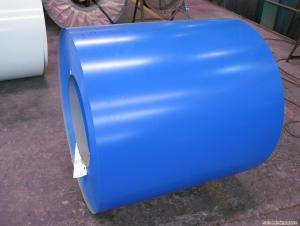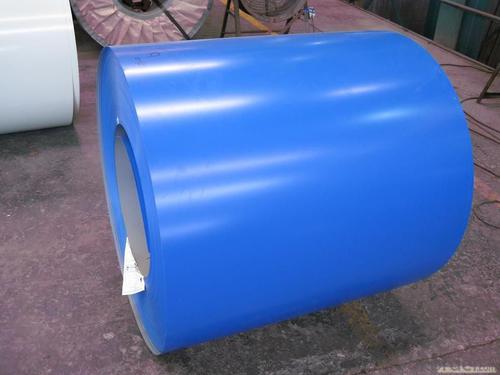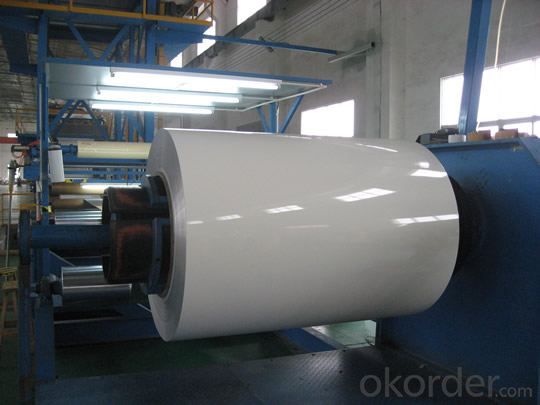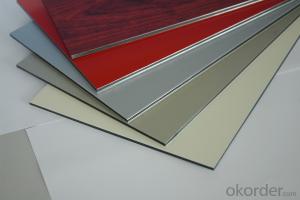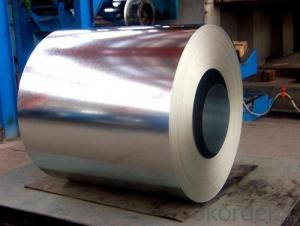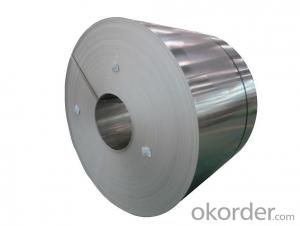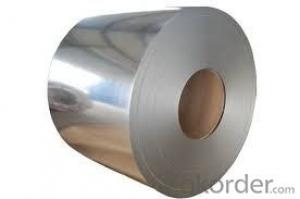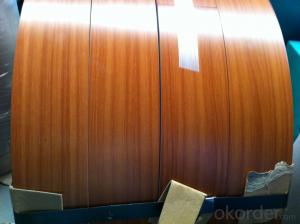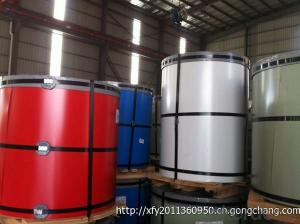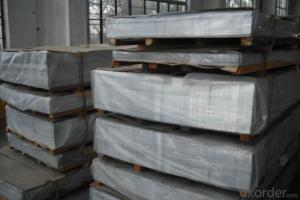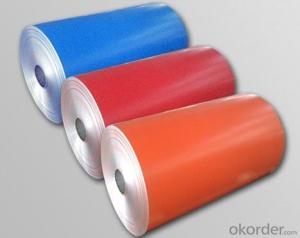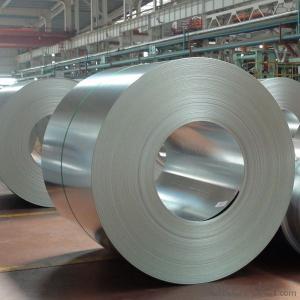4x8 Sheets of 1/8 Aluminum - Hot Rolled Aluminum Coils for Color Coated
- Loading Port:
- Shanghai
- Payment Terms:
- TT OR LC
- Min Order Qty:
- 5 m.t.
- Supply Capability:
- 20000 m.t./month
OKorder Service Pledge
OKorder Financial Service
You Might Also Like
Specification
1.Structure of Hot Rolled Aluminium Coils for Color Coated
Hot Rolled Aluminium Coils for Color Coated is one semi-finished aluminium material. This strip can be rolled down to aluminium coil,sheet,circle ect. The alloy AA1050 is widly used in building, industry ect. Its weight is much lower than steel. So many customers choosed aluminium material instead of steel.
2. Main features of Hot Rolled Aluminium Coils for Color Coated
a.Competitive price---We have our own mills and can produce mill finished aluminium coils, so we can control the production cost better.
b.Professional after-sale service---We have more than 15 years exportation experience and you need not worry about the exporation problems.
c.Fast delivery time---We can control the delivery time within 35 days.
3. Image of Hot Rolled Aluminium Coils for Color Coated

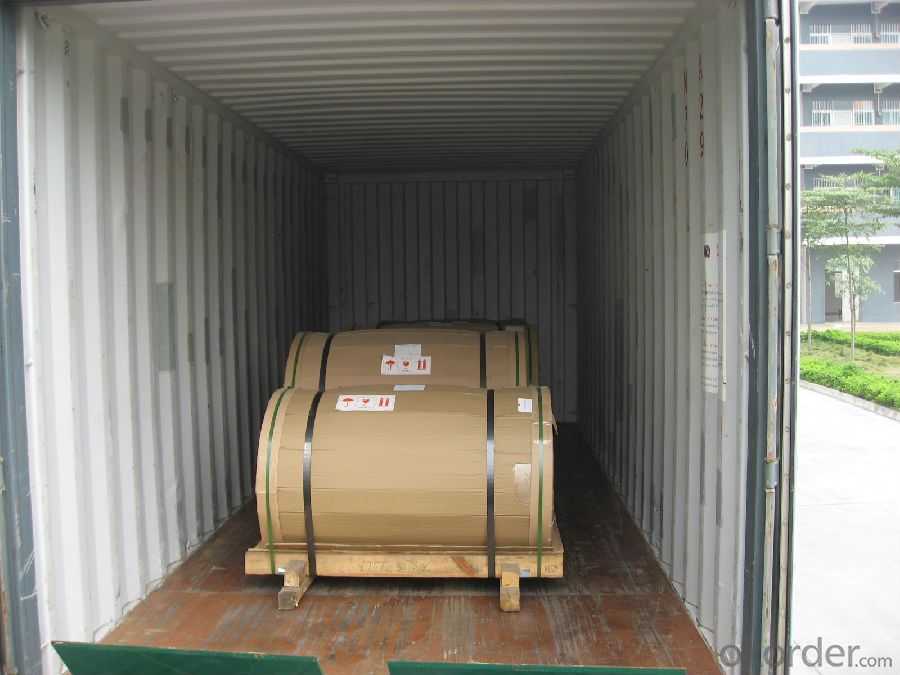
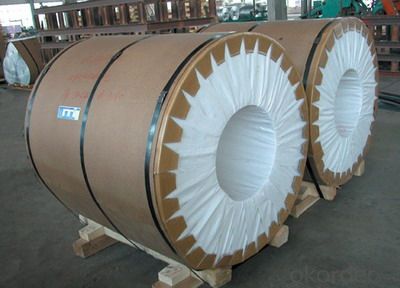
4. Product Specification of Hot Rolled Aluminium Coils for Color Coated
| Alloy | Temper | Style | Thickness | Width |
| AA1100 | H14 | Direct Casting | 0.2mm-3mm | 1000mm-1500mm |
5.FAQ of Hot Rolled Aluminium Coils for Color Coated
What is the quality standard?
---Usually our standard is GB3880-2006
What is the largest width?
---It is 2300mm
What is the MOQ?
---Usually we can accept 80 tons.
- Q: What are the different edge treatments available for aluminum sheets?
- Aluminum sheets offer a range of edge treatments, each with its own purpose or aesthetic appeal. Some commonly used edge treatments for aluminum sheets are as follows: 1. Mill Finish: The standard treatment leaves the sheet's raw edges untouched, resulting in a smooth, unfinished look. 2. Trimmed: This treatment involves trimming and smoothing the rough edges of the sheet to create a clean, rounded edge. Techniques like shearing or milling are often employed. 3. Deburred: Sharp edges are removed through deburring, which typically involves filing or sanding. This process ensures a smoother and safer edge. 4. Rolled: By bending the edges inward or outward, rolled edges provide added strength and rigidity to the sheet while enhancing its appearance. 5. Anodized: Anodizing involves immersing the sheet in an electrolytic solution and applying an electric current. This creates a protective oxide layer that can be colored, resulting in an attractive and durable edge finish. 6. Powder Coated: Dry powder paint is applied to the sheet and then heated to form a hard, protective finish. This treatment allows for a variety of colors and textures to be achieved. 7. Brushed: Abrasive materials are used to brush the sheet, creating a visually appealing textured edge. Brushed finishes are often chosen for decorative purposes. 8. Polished: The sheet is buffed to create a smooth and reflective surface. Polishing is commonly utilized in architectural and decorative applications to enhance the edge's appearance. These examples illustrate the range of edge treatments available for aluminum sheets. The choice of treatment depends on factors such as the intended use, desired aesthetics, and functional requirements of the sheet.
- Q: What are the different methods of finishing aluminum sheet edges?
- There are several methods that can be used to finish aluminum sheet edges, depending on the desired outcome and application. One common method is deburring, which involves removing any sharp or rough edges from the aluminum sheet. This can be done using various tools such as files, sandpaper, or specialized deburring machines. Deburring not only improves the appearance of the edges but also helps to prevent any potential injuries or accidents caused by sharp edges. Another method is chamfering, which involves creating a beveled edge on the aluminum sheet. This can be achieved using chamfering tools or by carefully filing or sanding the edges at a specific angle. Chamfering is often done to enhance the aesthetics of the aluminum sheet and to make it easier to handle and assemble. Additionally, edge rounding is a technique that involves smoothing the edges of the aluminum sheet to create a rounded or curved profile. This can be done using tools such as sanders, grinders, or specialized edge rounding machines. Edge rounding not only improves the visual appeal of the aluminum sheet but also helps to reduce the risk of injury from sharp edges. Furthermore, anodizing is a popular finishing method for aluminum sheet edges. Anodizing involves creating a protective oxide layer on the surface of the aluminum through an electrochemical process. This not only enhances the corrosion resistance of the aluminum but also provides a range of color options for the edges, allowing for customization and improved aesthetics. Lastly, powder coating is another method that can be used to finish aluminum sheet edges. Powder coating involves applying a dry powder onto the surface of the aluminum and then heating it to create a durable and decorative finish. This method offers a wide variety of colors, textures, and finishes, allowing for customization and enhanced visual appeal. Overall, the choice of finishing method for aluminum sheet edges will depend on factors such as the desired appearance, functionality, and application requirements. It is important to consider these factors and consult with experts to determine the most suitable method for a specific project.
- Q: What is the melting point of aluminum sheets?
- Aluminum sheets melt at around 660 degrees Celsius or 1220 degrees Fahrenheit.
- Q: Can 101 aluminum sheets be purchased in small quantities or only in bulk?
- Both small quantities and bulk purchases of aluminum sheets are typically available. The availability may vary depending on the supplier or retailer, but many offer aluminum sheets in a range of sizes and quantities to meet the diverse needs of customers. Whether you need a few sheets for a small project or a larger quantity for industrial purposes, it is beneficial to explore different suppliers to find the option that aligns with your requirements.
- Q: Can aluminum sheet be used for packaging applications?
- Certainly! Packaging applications can definitely make use of aluminum sheet. The packaging industry widely employs aluminum due to its exceptional qualities. Its lightweight nature, strength, durability, and ability to be molded make it perfect for packaging diverse products. Aluminum sheets can be easily shaped into different forms and sizes, offering tailored packaging solutions. Moreover, aluminum boasts excellent barrier properties, guarding against moisture, gases, and light, which helps maintain the freshness and quality of packaged goods. Additionally, aluminum is non-toxic and can be effortlessly recycled, making it an environmentally friendly choice for packaging applications. In conclusion, aluminum sheet is a versatile and dependable material for packaging various items, such as food, beverages, pharmaceuticals, cosmetics, and more.
- Q: I know aluminium forms a protective layer of aluminum oxide and hence water does not corrodes it easily.However, since the oxide is amphoteric, won't it react with acids and subsequently be dissolved?What is the main reason aluminium cans are used?
- The old tin ones and bottles hurt when you smash them on your forehead
- Q: Can 101 aluminum sheets be used in the construction industry?
- Yes, 101 aluminum sheets can be used in the construction industry.
- Q: How do aluminum sheets perform in terms of machinability?
- Aluminum sheets are known for their excellent machinability. They can be easily cut, drilled, and shaped using various machining processes. The softness and low melting point of aluminum make it highly conducive to machining operations. Additionally, aluminum sheets exhibit good chip formation and evacuation, resulting in smooth and efficient machining.
- Q: How do aluminum sheets handle extreme temperatures?
- The exceptional ability of aluminum sheets to handle extreme temperatures is widely recognized. This is primarily due to their high thermal conductivity, which enables them to effectively dissipate heat. As a result, they are suitable for applications involving high temperatures. Aluminum, with a melting point of 660 degrees Celsius (1220 degrees Fahrenheit), can withstand a wide range of extreme temperatures without compromising its structural integrity. When exposed to intense heat, aluminum sheets do not easily deform or warp. Consequently, they are ideal for use in environments with high temperatures, such as industrial furnaces, automotive engines, and aerospace applications. Furthermore, aluminum has a low coefficient of thermal expansion, meaning it expands and contracts minimally when subjected to temperature variations. This significantly reduces the risk of cracking or structural damage. On the contrary, aluminum also performs exceptionally well in extremely cold temperatures. It remains durable and retains its strength even in freezing conditions. This makes aluminum sheets suitable for cryogenic applications, including the construction of liquid natural gas tanks or aerospace components that operate in low-temperature environments. In conclusion, aluminum sheets excel in handling extreme temperatures due to their high thermal conductivity, low coefficient of thermal expansion, and excellent structural integrity. Whether subjected to intense heat or extreme cold, aluminum sheets remain stable and reliable, making them the preferred choice in various industries.
- Q: How is the thickness of aluminum sheets measured?
- A micrometer is typically utilized to measure the thickness of aluminum sheets. This precision instrument consists of a calibrated screw mechanism featuring a spindle and anvil. To determine the thickness of an aluminum sheet, it is positioned between the spindle and anvil of the micrometer. By turning the screw, pressure is applied to firmly secure the sheet in place. The measurement can then be obtained by reading the scale or digital display on the micrometer. Alternatively, a thickness gauge is commonly employed for this purpose. This gauge employs a set of parallel anvils to measure the sheet's thickness. The sheet is inserted into the gap between the anvils, and the measurement can be obtained by reading the scale or display on the gauge. Both methods yield precise and dependable measurements of aluminum sheet thickness.
Send your message to us
4x8 Sheets of 1/8 Aluminum - Hot Rolled Aluminum Coils for Color Coated
- Loading Port:
- Shanghai
- Payment Terms:
- TT OR LC
- Min Order Qty:
- 5 m.t.
- Supply Capability:
- 20000 m.t./month
OKorder Service Pledge
OKorder Financial Service
Similar products
Hot products
Hot Searches
Related keywords
